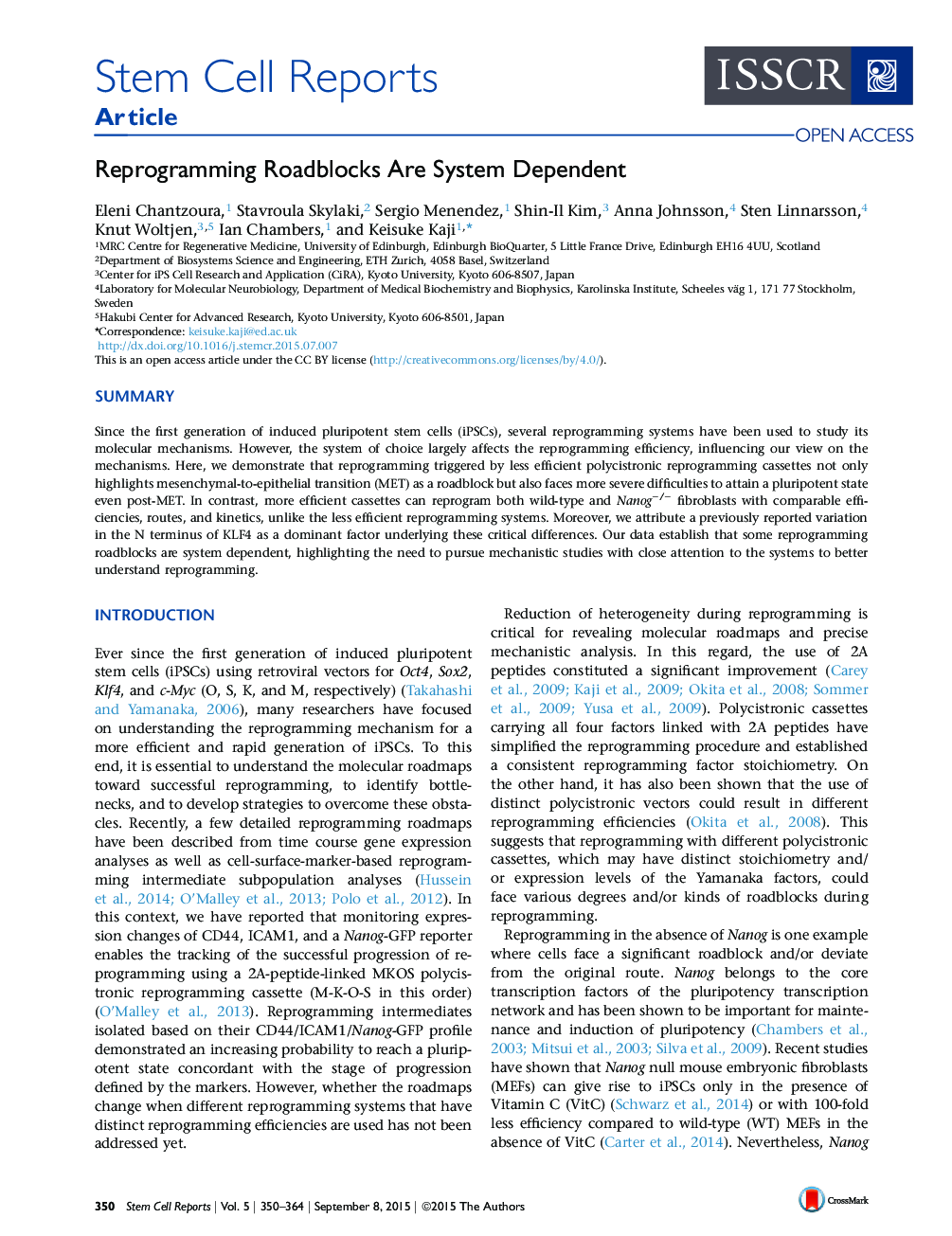| Article ID | Journal | Published Year | Pages | File Type |
|---|---|---|---|---|
| 2093404 | Stem Cell Reports | 2015 | 15 Pages |
•Distinct reprogramming cassettes yield different reprogramming intermediates•MET is not a major rate-limiting step in reprogramming with high KLF4 expression•A lack of endogenous Nanog becomes trivial in efficient reprogramming systems•Roadblocks toward iPSCs depend on the reprogramming systems
SummarySince the first generation of induced pluripotent stem cells (iPSCs), several reprogramming systems have been used to study its molecular mechanisms. However, the system of choice largely affects the reprogramming efficiency, influencing our view on the mechanisms. Here, we demonstrate that reprogramming triggered by less efficient polycistronic reprogramming cassettes not only highlights mesenchymal-to-epithelial transition (MET) as a roadblock but also faces more severe difficulties to attain a pluripotent state even post-MET. In contrast, more efficient cassettes can reprogram both wild-type and Nanog−/− fibroblasts with comparable efficiencies, routes, and kinetics, unlike the less efficient reprogramming systems. Moreover, we attribute a previously reported variation in the N terminus of KLF4 as a dominant factor underlying these critical differences. Our data establish that some reprogramming roadblocks are system dependent, highlighting the need to pursue mechanistic studies with close attention to the systems to better understand reprogramming.
Graphical AbstractFigure optionsDownload full-size imageDownload as PowerPoint slide
